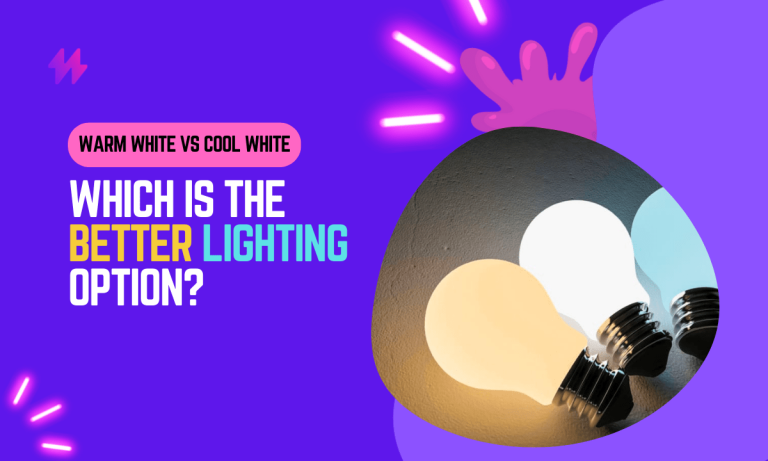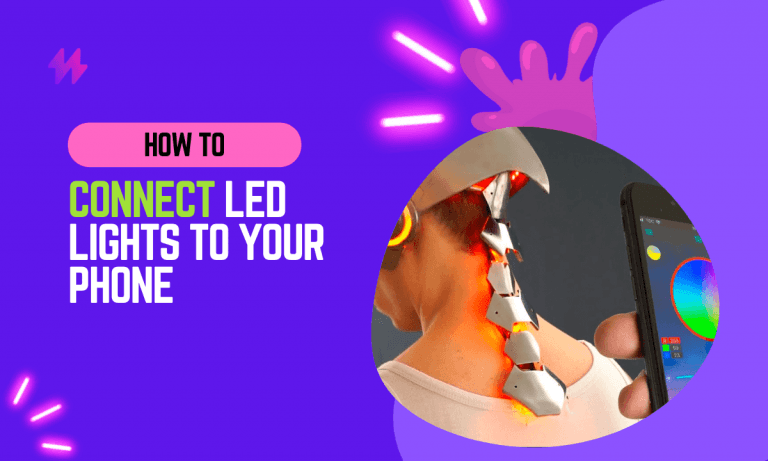Do LED Lights Attract Silverfish? Exploring the Connection
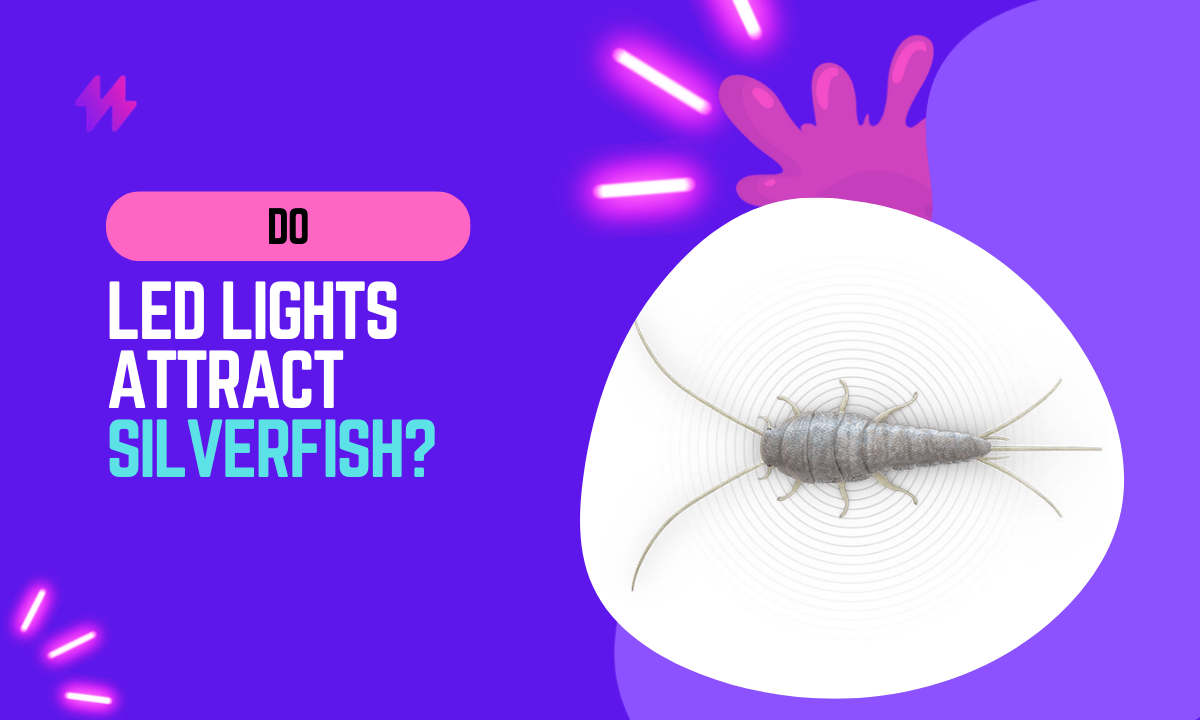
LED lights have gained popularity in recent years for their energy efficiency, longevity, and versatility in various applications. While LED lights have numerous advantages, a question that frequently arises is do LED lights attract silverfish and other bugs.
In this blog, we will dive into the intriguing connection between LED lights and silverfish to separate fact from fiction. We will explore the behavior of silverfish, shed light on the characteristics of LED lights, and examine the factors that might contribute to silverfish sightings in proximity to LED lighting.
It is crucial to understand how artificial lighting, such as those produced by LED lamps, might influence silverfish behavior. To maintain a silverfish-free home, one can consider various silverfish control services and strategies to reduce overall silverfish activity, especially in areas where bright light sources are prevalent.
Understanding Silverfish: Exploring the Connection Between LED Lights and Their Attraction
Silverfish, scientifically known as Lepisma saccharina, are small, wingless insects that belong to the order Zygentoma. They are aptly named for their silvery-gray color and fish-like movements. Measuring about half an inch in length, silverfish have elongated bodies with three long, tail-like appendages at the rear and two antennae at the front.
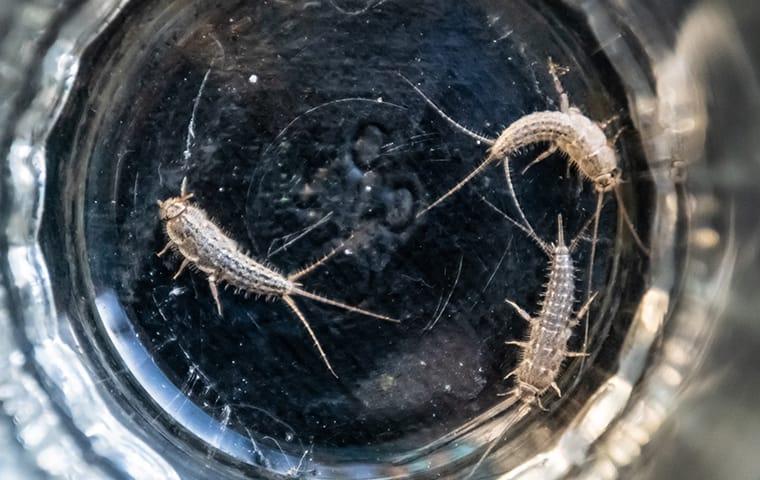
These nocturnal creatures are primarily active during the night and prefer dark, undisturbed areas. They have a distinct preference for environments with high humidity levels, typically between 75% and 95%.
Due to their moisture requirements, silverfish are commonly found in bathrooms, kitchens, basements, attics, and other areas with water sources or dampness.
Silverfish have a particular appetite for starchy materials found in books, wallpaper, and glue bindings. Hence, they can be found lurking in libraries, bookstores, and homes with extensive book collections.
Also read: Can You Put LED Light Strips on Wallpaper?
Silverfish, those shiny creatures with silvery scales, are known to be most active at night, seeking dark and humid environments. Understanding whether “do LED lights attract silverfish? exploring the connection” can lead to better silverfish control strategies in your home, as these long-tailed silverfish are less likely to thrive in well-lit areas.
Do LED Lights Attract Silverfish? Exploring the Connection
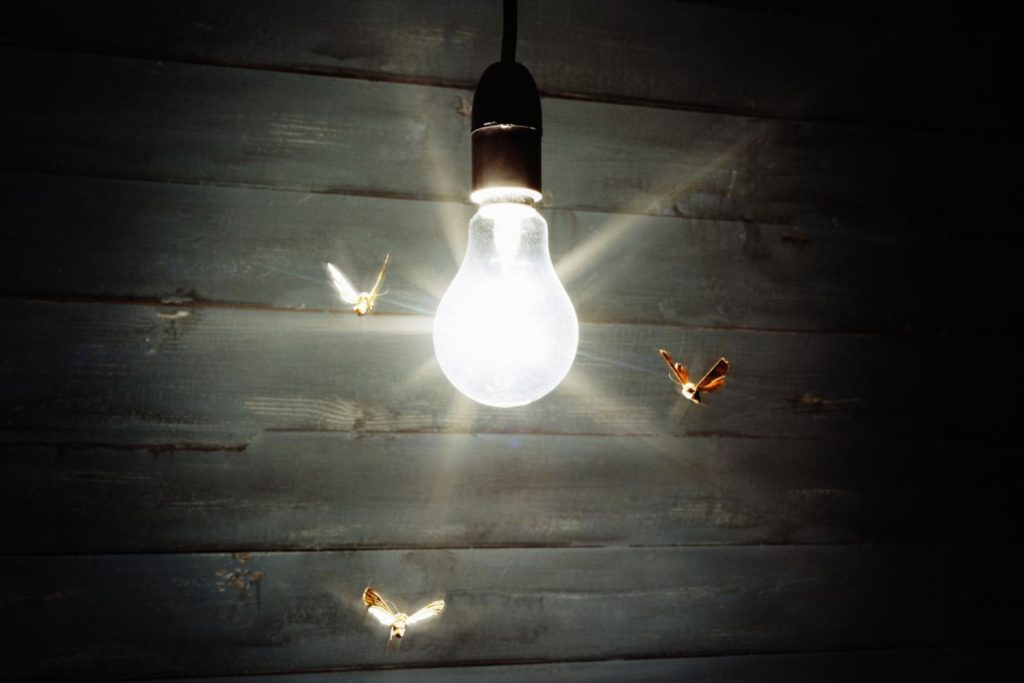
LED lights are not inherently attractive to bugs. Unlike more traditional incandescent bulbs or fluorescent lights, LED light bulbs do not emit a significant amount of ultraviolet light, which is known to attract bugs.
Insects, particularly nocturnal ones, are highly sensitive to UV light and are naturally drawn to it. However, LEDs emit very little UV light, making them less attractive to bugs compared to other light bulbs.
Heat is another factor that can attract certain bugs. For example, some flying insects, like moths, are attracted to the warmth of light emitted by incandescent lights. With LED lights generating less heat, they are less likely to draw in these heat-seeking insects.
Read in detail about whether LED lights attract bugs.
Notably, silverfish show a preference for dark, humid areas, which means that LED lighting may not significantly impact their presence in your home. While silverfish aren’t drawn to LED lights, understanding their behavior can help in designing effective silverfish control strategies. Additionally, ensuring that your living spaces are less conducive to these silvery creatures can mitigate any potential infestations.
Investigating the Claim: Do LED Lights Attract Silverfish?
The short answer is no, LED lights do not inherently attract silverfish. Silverfish are not naturally drawn to light sources like other pests, such as moths or flies.
Unlike most bugs these flying insects that are attracted to light, silverfish exhibit negative phototaxis, meaning they tend to avoid light and prefer dark, undisturbed areas.
LED lights emit minimal UV light, which is one of the factors that attract bugs. Since silverfish are not attracted to UV light, LED lights do not specifically lure them toward the light source. Therefore, you can safely install LED lights without worrying about silverfish infestations caused by the lighting itself.
It’s important to recognize the distinction between the behaviors of various pests when considering pest management solutions. Focusing on the specific environmental preferences of material silverfish can greatly inform the development of effective prevention and control measures in your home.
Why Silverfish Are Drawn to LED Light: Understanding the Attraction
Silverfish are not attracted to LED lights. They are attracted to moisture, warmth, yellow light, and dark places. LED lights emit less heat than other types of light bulbs, so they may help to keep silverfish away.
However, there are instances where silverfish may be observed in proximity to LED lights, which can lead to the misconception that they are attracted to the light bulb or the lights themselves.
Also read: Can You Use LED Bulbs In The Fridge?
Understanding the environmental preferences of silverfish is key to implementing effective prevention methods. By optimizing lighting and reducing moisture in your environment, you can further decrease the presence of these silverfish.
Factors that Attract Silverfish: Understanding LED Lights and Their Influence
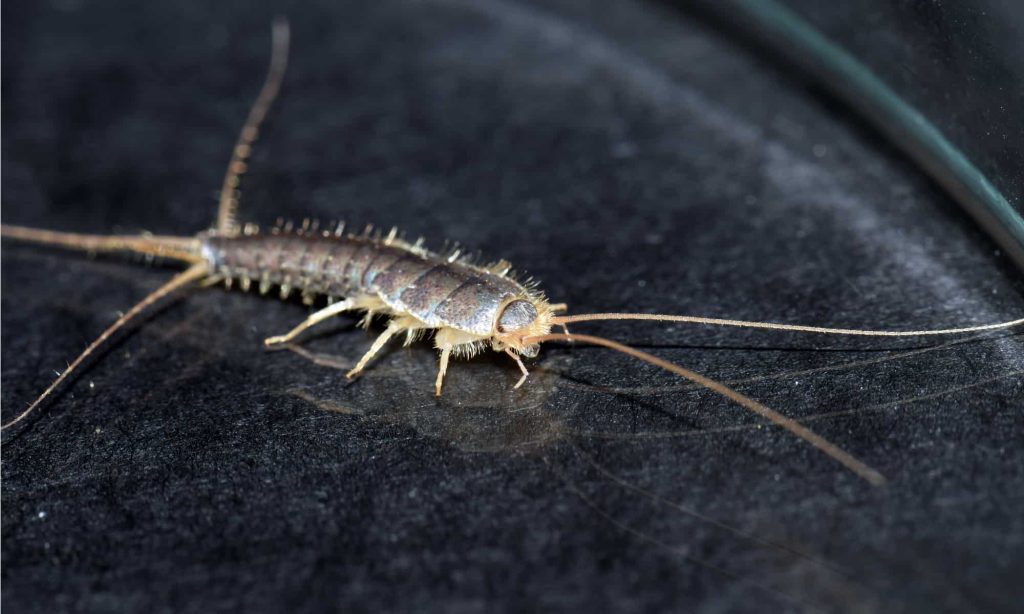
Common Areas Where Silverfish Thrive: Understanding Their Attraction
LED lights are often installed in areas like bathrooms and kitchens, which are environments where silverfish tend to thrive due to the presence of moisture. Therefore, it is possible to observe silverfish near LED lights, but their presence is due to the existing favorable conditions in these spaces, not the attraction to the lights or led bulbs themselves.
To effectively manage silverfish in your home, addressing moisture and clutter is essential, as these pests favor damp environments. Incorporating silverfish control services that align with your specific needs will also be instrumental in maintaining a silverfish-free home.
Increased LED Light Usage: Understanding Silverfish Attraction Factors
As LED lights have become more popular, you might notice more silverfish in your home coincidentally. However, this correlation does not imply causation.
The increased presence of silverfish can be attributed to other factors such as environmental conditions or changes in their habitats, rather than the usage of LED lights.
The relationship between LED lights and silverfish activity deserves careful investigation. By employing targeted silverfish control services, homeowners can effectively decrease the likelihood of encountering these pests in their living spaces.
Nocturnal Activity: Understanding Silverfish Attraction to LED Lights
Silverfish are nocturnal creatures, meaning they are more active during the night. Therefore, when LED lights are on during the night, it may increase the chances of spotting silverfish.
However, their presence near the bright lights is not due to attraction but rather their natural behavior or their attempts to find food sources.
Homeowners should be aware that maintaining a clutter-free environment can significantly reduce silverfish hiding spots. Additionally, combining strategies like sealing cracks and minimizing dampness can further enhance your silverfish control efforts.
Do LED Strip Lights Attract Silverfish? Insights on Silverfish Behavior and LED Attraction
LED strip lights do not inherently attract silverfish. Silverfish are not naturally drawn to blue light wavelengths or sources and do not exhibit positive phototaxis.
LED strip lights emit minimal ultraviolet light, which is known to attract insects, including some flying pests like moths. Since silverfish do not respond to UV light, they are not specifically attracted to LED strip lights.
While LED strip lights may not attract silverfish, homeowners should still consider other factors that contribute to silverfish presence in their homes. By focusing on effective silverfish control services, one can create an environment that deters these pests from thriving.
Practical Strategies for Preventing Silverfish Infestations
Maintaining Optimal Conditions to Control Moisture Levels
Silverfish thrive in damp and humid environments, so it’s essential to address any moisture issues in your home. Fix leaks, improve ventilation, and use dehumidifiers in areas prone to high humidity such as bathrooms, basements, and kitchens.
By reducing moisture, you make your home less attractive to silverfish.
Implementing these moisture-reduction strategies is vital for achieving effective silverfish control in your living spaces. By ensuring that your environment is well-ventilated and dry, you can significantly diminish the likelihood of silverfish infestations.
Securing Your Space: Seal Entry Points Against Silverfish
Silverfish can enter your home through small cracks and gaps in walls, windows, doors, and foundations. Inspect your home for potential entry points and seal them with caulk or weatherstripping. This helps prevent silverfish from gaining easy access and establishing a presence in your living spaces.
To create a barrier against silverfish, it is essential to regularly check and maintain the integrity of your home’s structure. By ensuring that any discovered gaps are promptly sealed, homeowners can effectively enhance their overall silverfish control efforts.
Strategies to Declutter and Organize for Effective Silverfish Prevention
Silverfish thrive in cluttered environments where they can find hiding spots. Regularly declutter and organize your belongings, especially in storage areas like basements and attics.
Use airtight containers to store items such as books, clothing, and paper goods, as silverfish are attracted to starches and sugars found in these materials.
To effectively prevent silverfish infestations, it’s crucial to maintain a clean and organized environment. Implementing comprehensive silverfish control services can facilitate the success of your pest management efforts.
Effective Strategies to Vacuum Regularly | Silverfish Prevention Tips
Vacuuming your home regularly helps remove silverfish eggs, nymphs, and adults. Pay close attention to areas where silverfish are likely to hide, such as cracks, crevices, baseboards, and carpets. Empty the vacuum bag or canister outside to prevent any captured silverfish from reinfesting your home.
Cleaning your home on a consistent basis is vital for controlling silverfish populations. By adopting thorough cleaning routines alongside targeted silverfish control services, you can effectively minimize the risks of these pests re-entering your living spaces.
Effective Food Storage Techniques to Prevent Silverfish Infestations
Silverfish are attracted to food sources, particularly those rich in starches and sugars. Store pantry items like cereals, flour, and pet food in airtight containers to prevent silverfish from accessing them.
Keep kitchen counters and floors clean, wiping up any spills or crumbs that may attract bugs & silverfish.
To further deter silverfish, it’s essential to vacuum regularly and eliminate any potential hiding spots within your home. Regularly assessing your food storage practices can play a significant role in preventing silverfish infestations.
Minimize Excess Moisture in Bathrooms to Deter Silverfish
Silverfish often congregate in bathrooms due to the high humidity. After taking showers or baths, use exhaust fans or open windows to reduce moisture build-up. Wipe down wet surfaces and fix any plumbing leaks promptly.
Implementing these moisture-reduction strategies is key to maintaining a silverfish-free home. Homeowners should be diligent about checking for damp areas, as this can make their living environment less inviting to silverfish.
Effective Use of Desiccants and Natural Repellents for Silverfish Control
Silverfish are sensitive to drying agents like silica gel or diatomaceous earth. Place these desiccants in areas where silverfish are likely to hide, such as closets, cabinets, and bookshelves.
Additionally, some natural repellents like cedar shavings, citrus peels, or lavender sachets may help deter silverfish, although their effectiveness may vary.
By incorporating desiccants like silica gel or diatomaceous earth into your pest management strategy, you can significantly enhance silverfish control services. Furthermore, utilizing natural repellents such as cedar shavings or citrus peels can also contribute to effectively maintaining a silverfish-free home.
Regular Inspection: Essential Steps for Silverfish Prevention
Conduct routine inspections of areas prone to silverfish infestation, such as dark corners, cracks, and behind furniture. By catching any signs of silverfish early on, you can take prompt action to prevent a full-blown infestation.
Regular inspections are vital for identifying potential silverfish hotspots that may go unnoticed. Proactive measures and timely interventions are essential for maintaining a silverfish-free home.
Effective Strategies for Professional Pest Control Against Silverfish
If you’re dealing with a persistent silverfish problem or if the infestation is extensive, consider contacting a professional pest control service. They can provide effective treatments and offer expert advice on preventing future silverfish infestations.
Engaging a professional pest control service can be an efficient way to tackle silverfish issues in your home. Through their expertise and effective treatments, they can help you achieve and maintain a silverfish-free home.
Final Thoughts on Silverfish and LED Light Attraction
In conclusion, the relationship between LED lights and the attraction of silverfish is not straightforward and warrants careful consideration of the specific characteristics of LED lighting and the behavioral patterns of silverfish. While traditional beliefs might suggest that all insects are drawn to light, recent studies indicate that silverfish, which are nocturnal and light-sensitive, typically avoid bright environments. LED lights emit less heat and may have different spectrums of light compared to incandescent or fluorescent bulbs, which could potentially make them less attractive to these pests. This could suggest that households and businesses using LED lighting may experience fewer incidents of silverfish attraction, though the light itself is not a definitive deterrent.
Moreover, the question of whether LED lights attract silverfish underscores the importance of considering multiple factors in pest control. Environmental conditions such as humidity and the availability of food sources play a significant role in silverfish infestations. Therefore, while switching to LED lighting might contribute minimally to deterring these pests, it is crucial to adopt comprehensive pest management practices. This includes maintaining low humidity levels, sealing cracks and crevices where silverfish can nest, and regularly cleaning spaces to reduce food particles that attract them. By addressing these factors alongside thoughtful lighting choices, one can create an environment that is less conducive to silverfish and more comfortable and hygienic for human occupants.
While LED lights can attract spiders or silverfish, this is often due to other factors such as existing infestations in moisture-prone areas or the nocturnal activity of silverfish coinciding with the light being on during the night. LED lights themselves do not attract silverfish.


